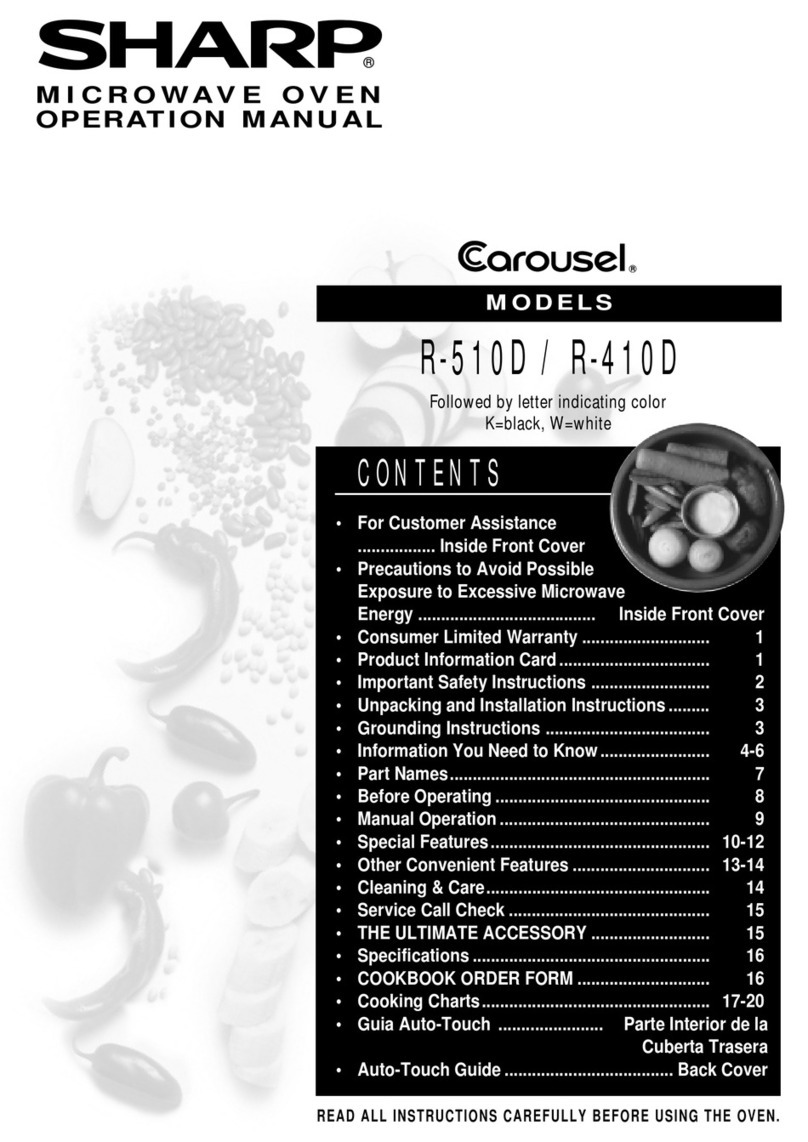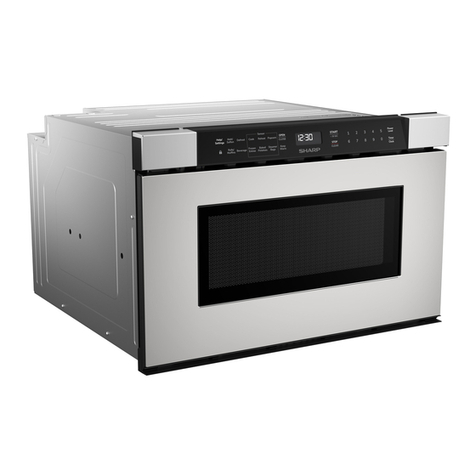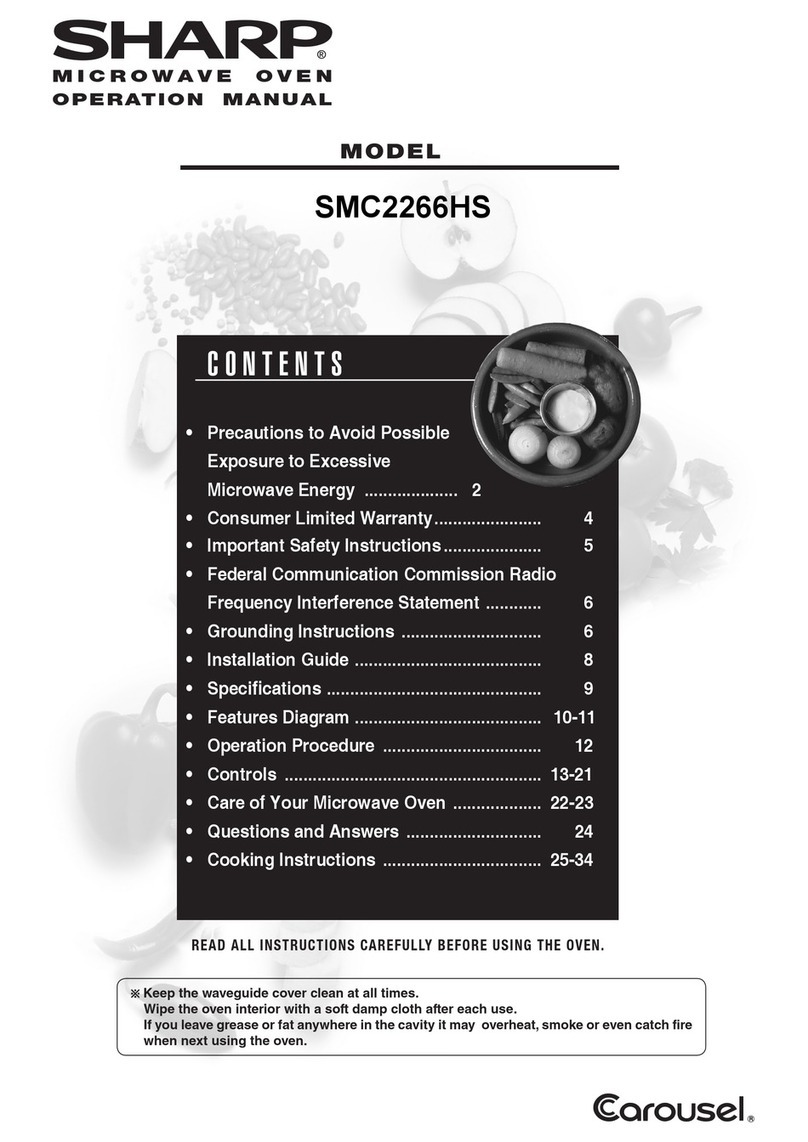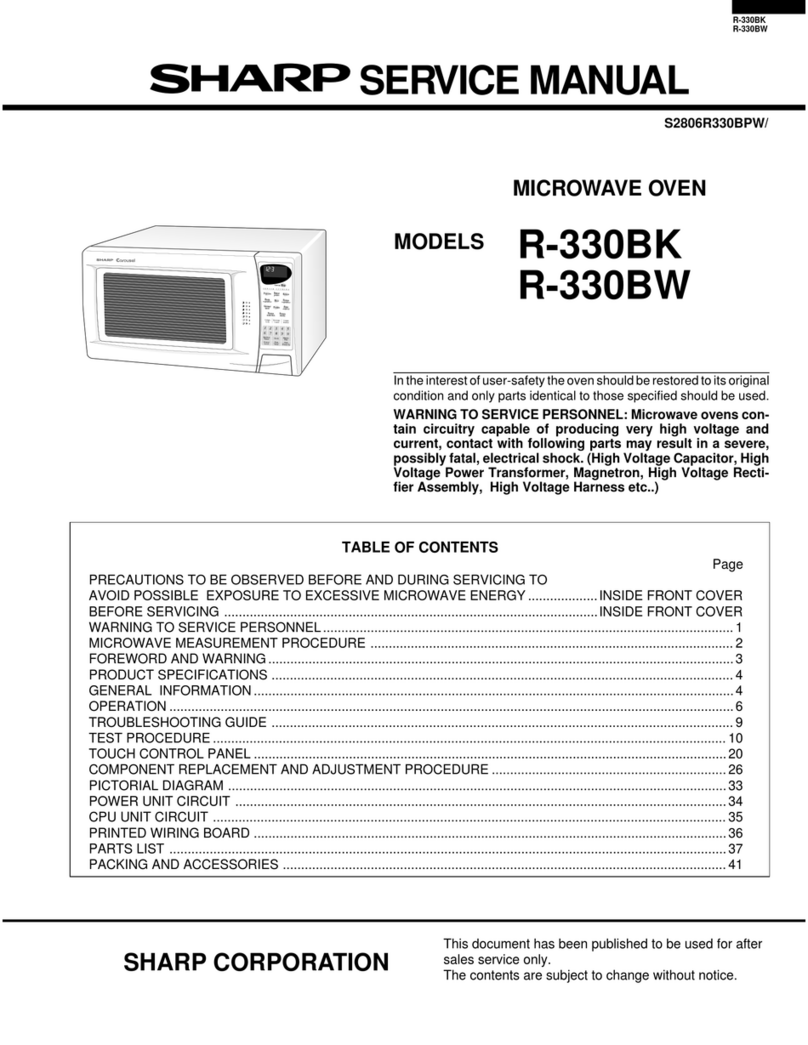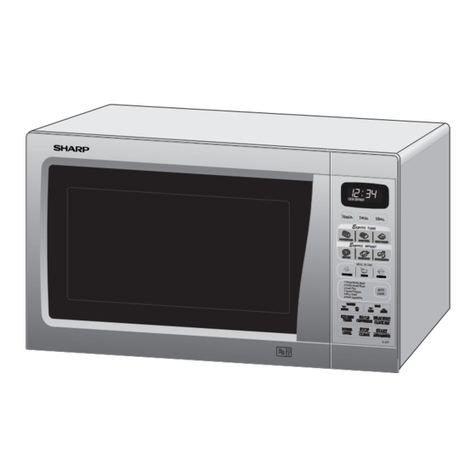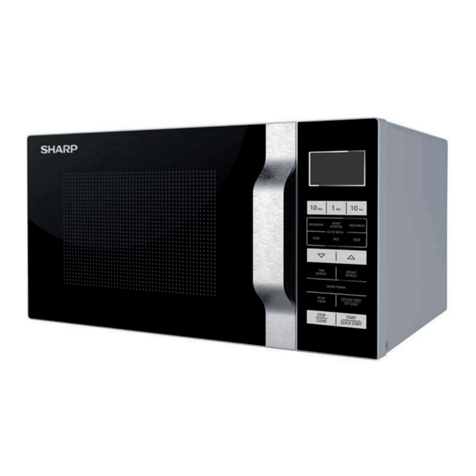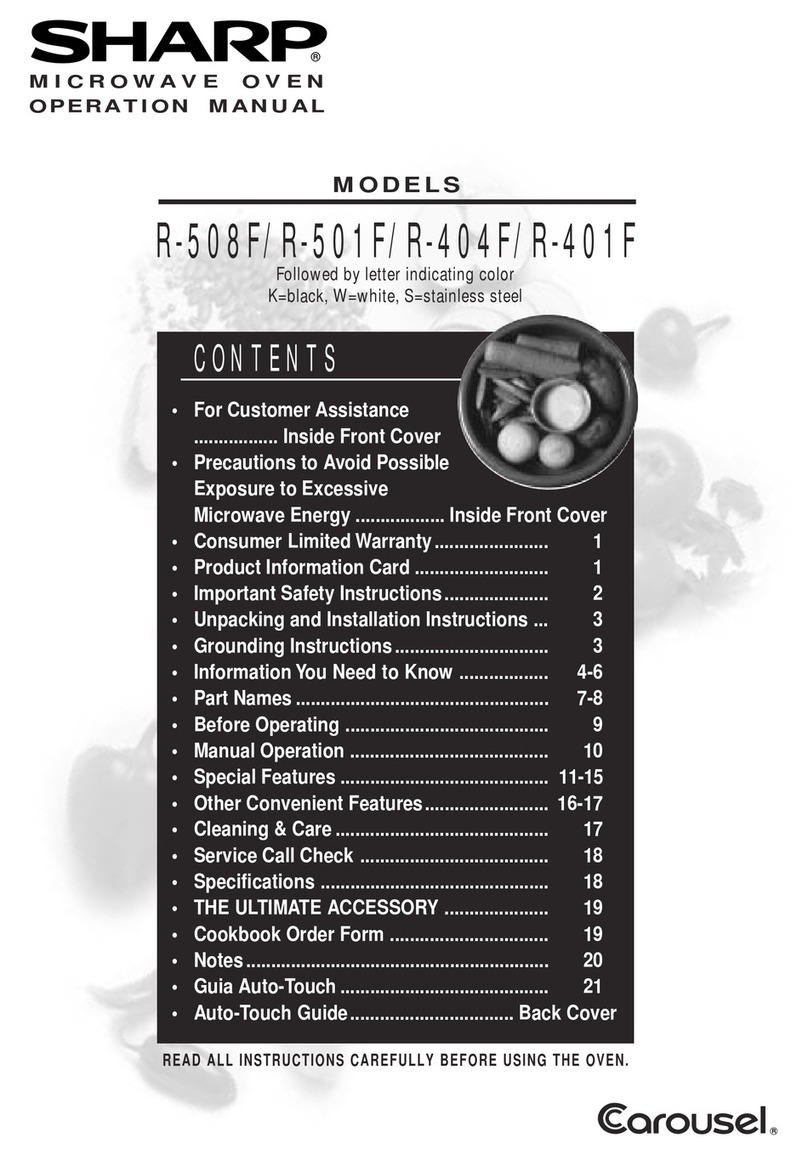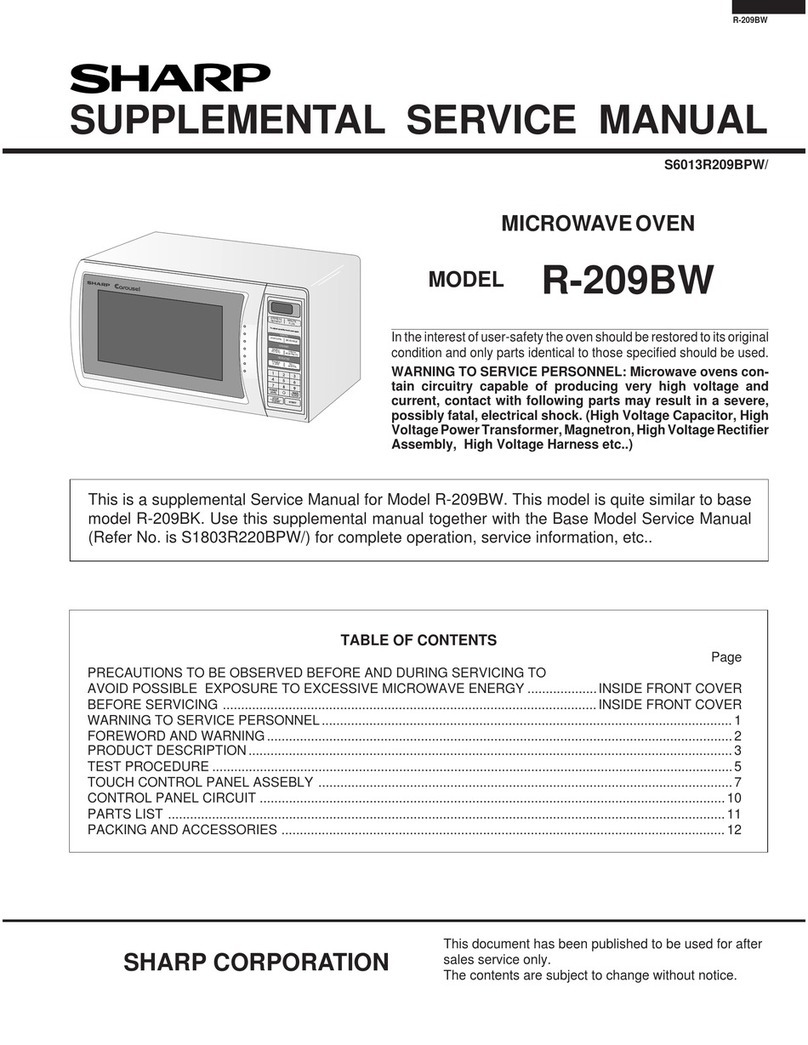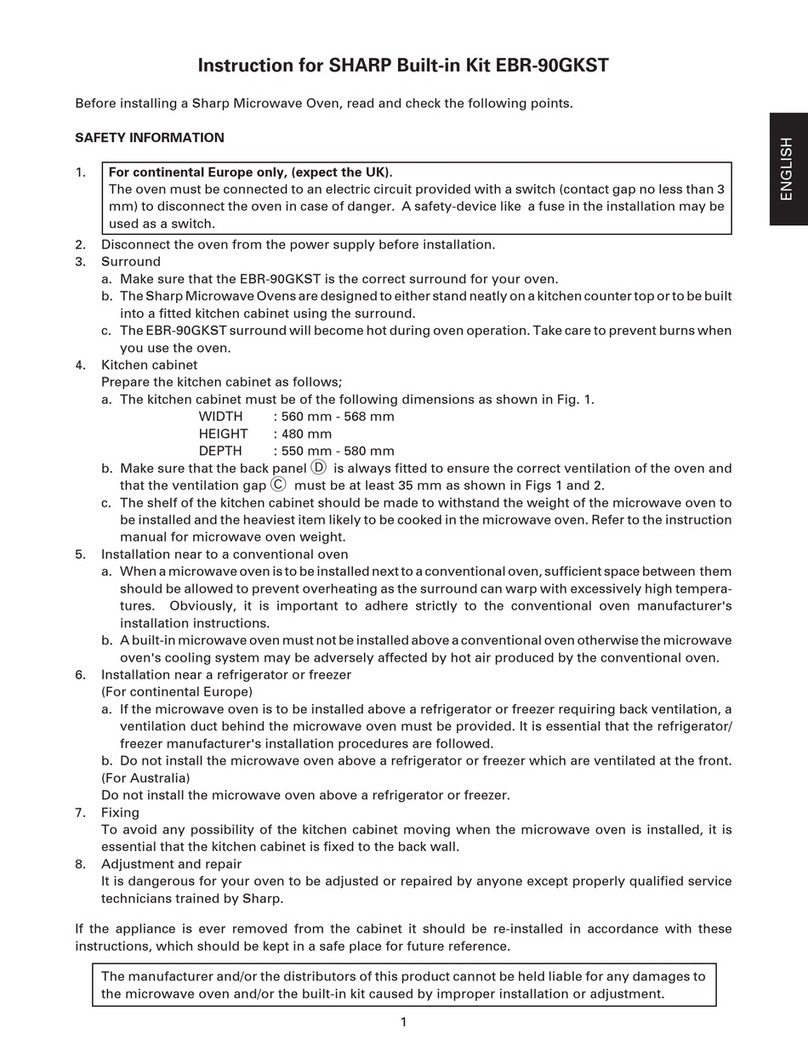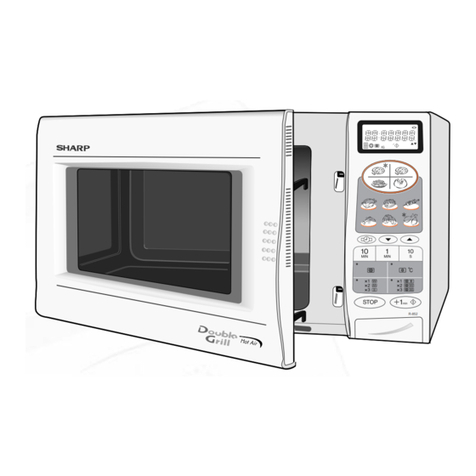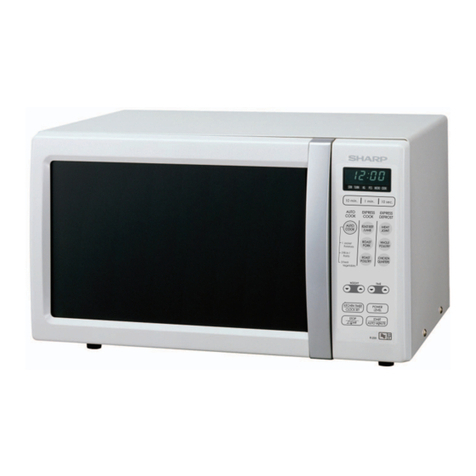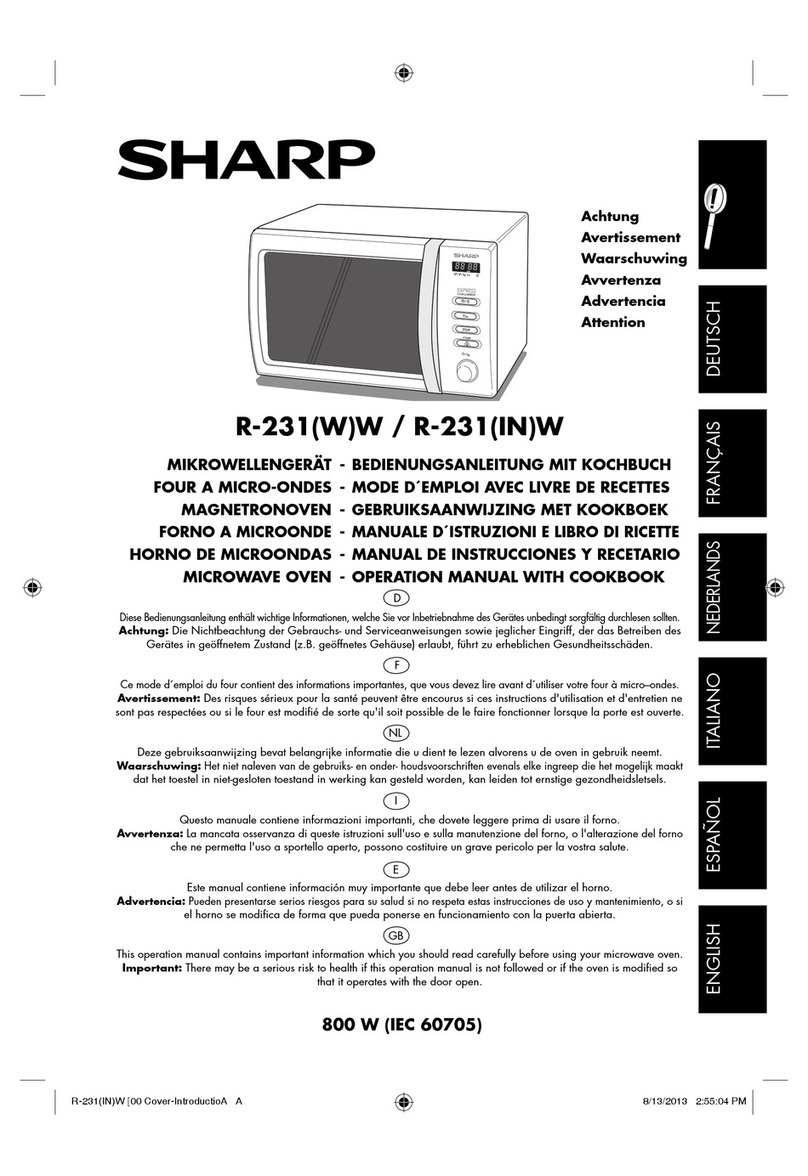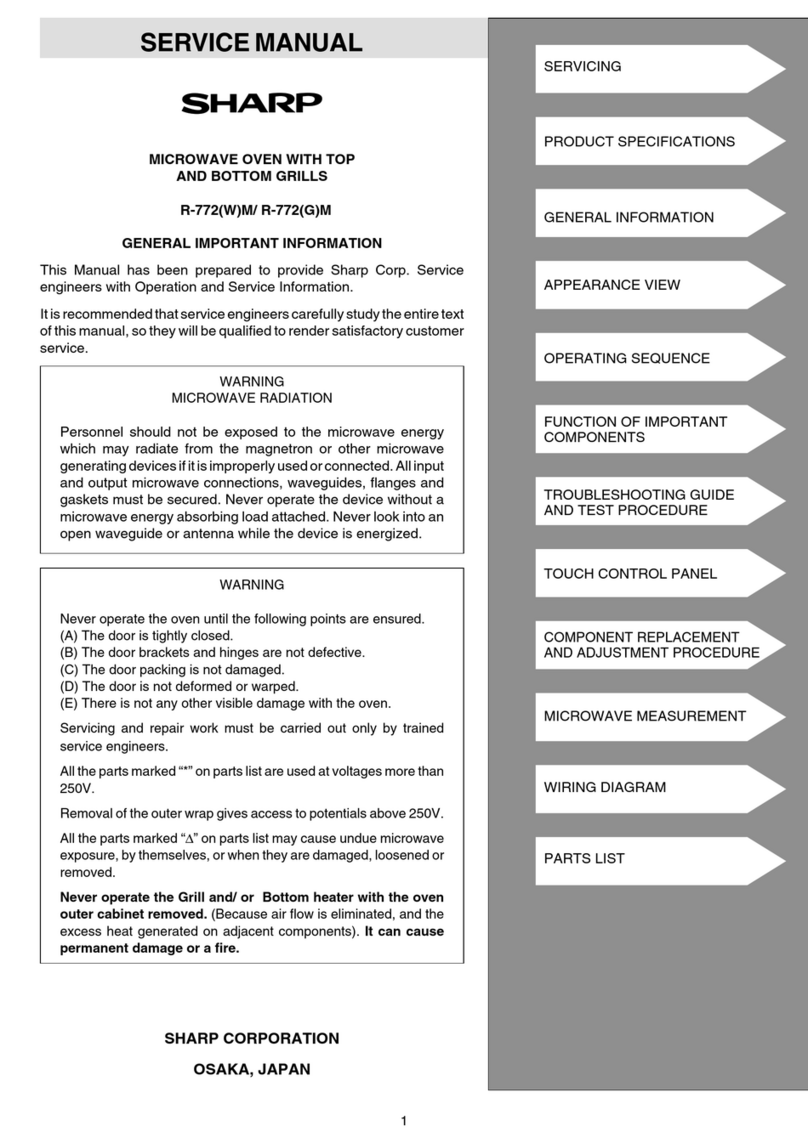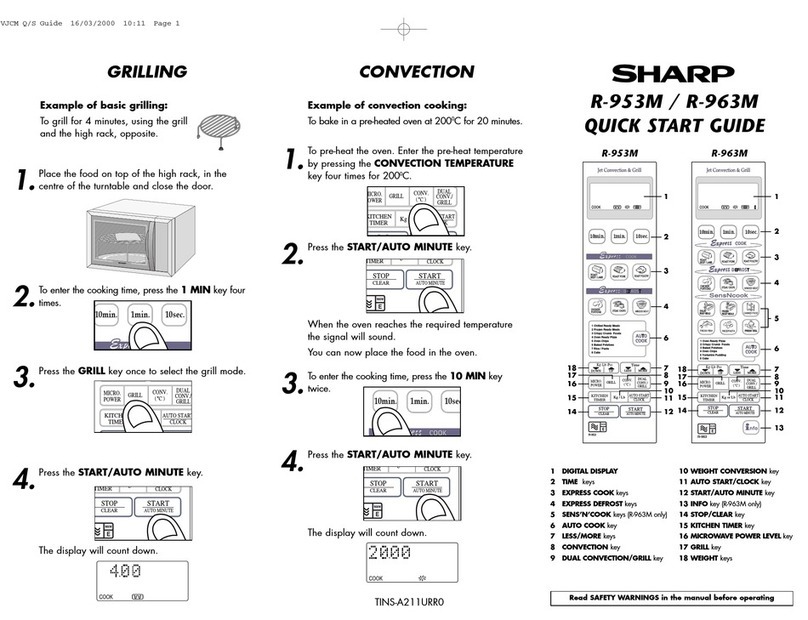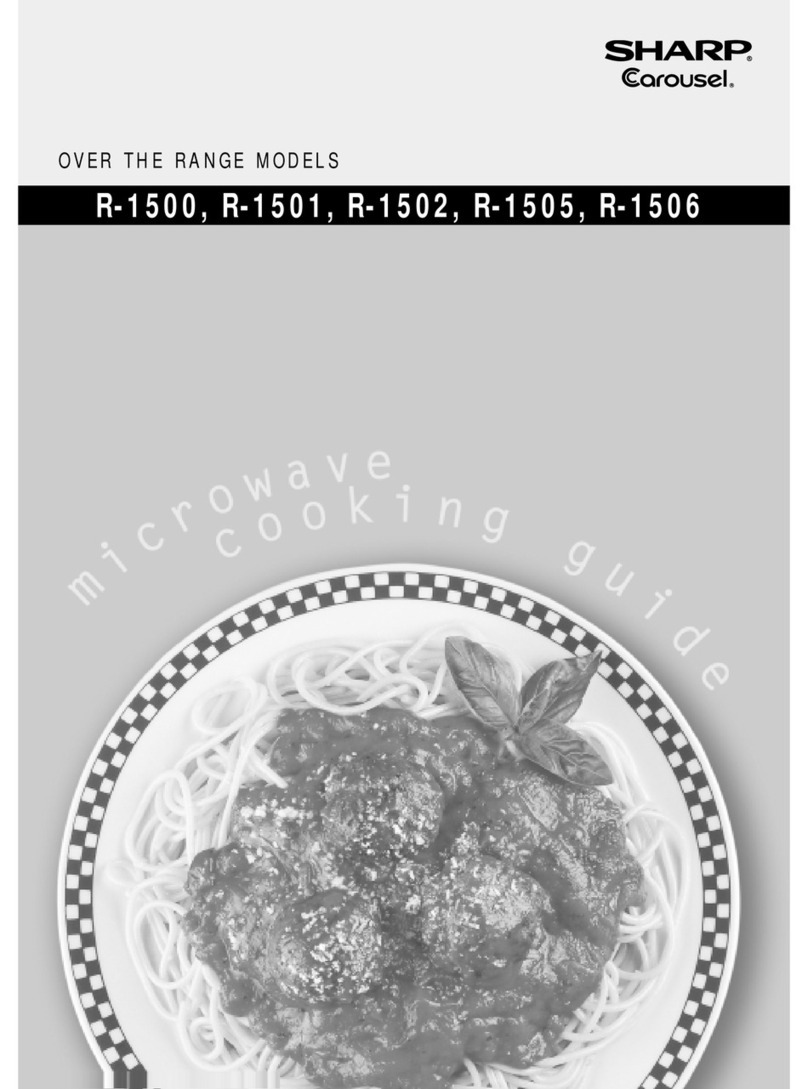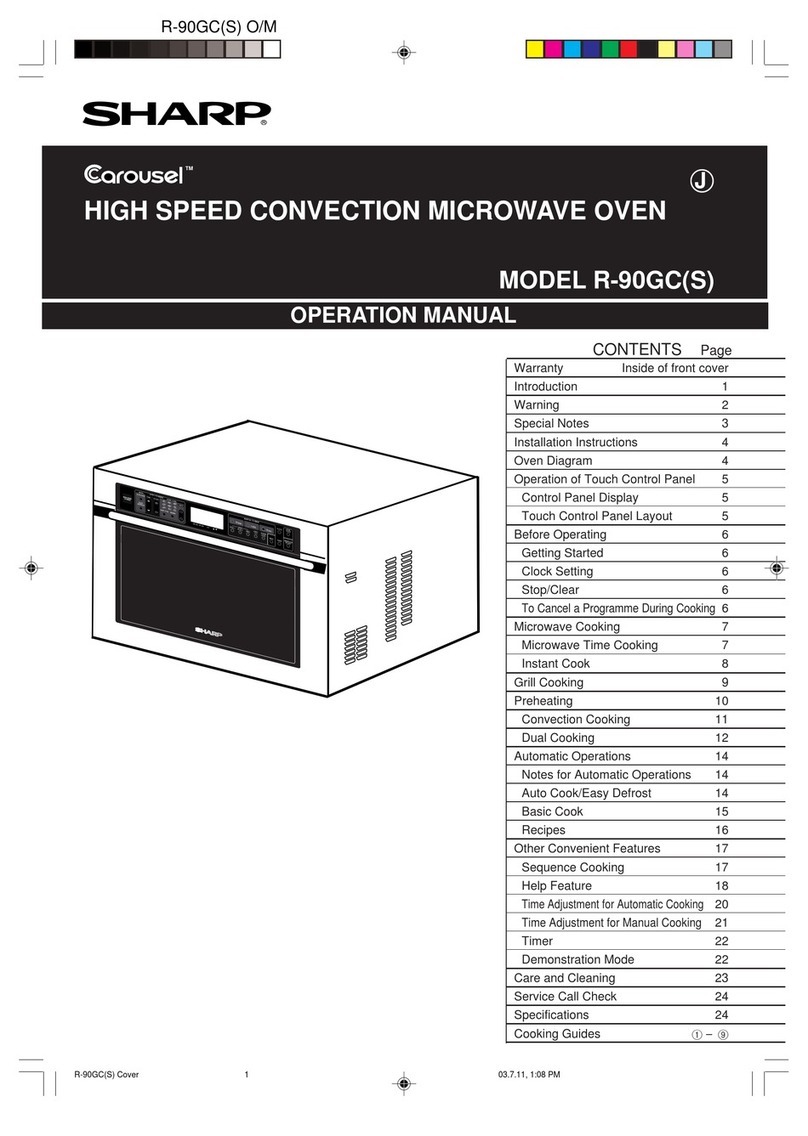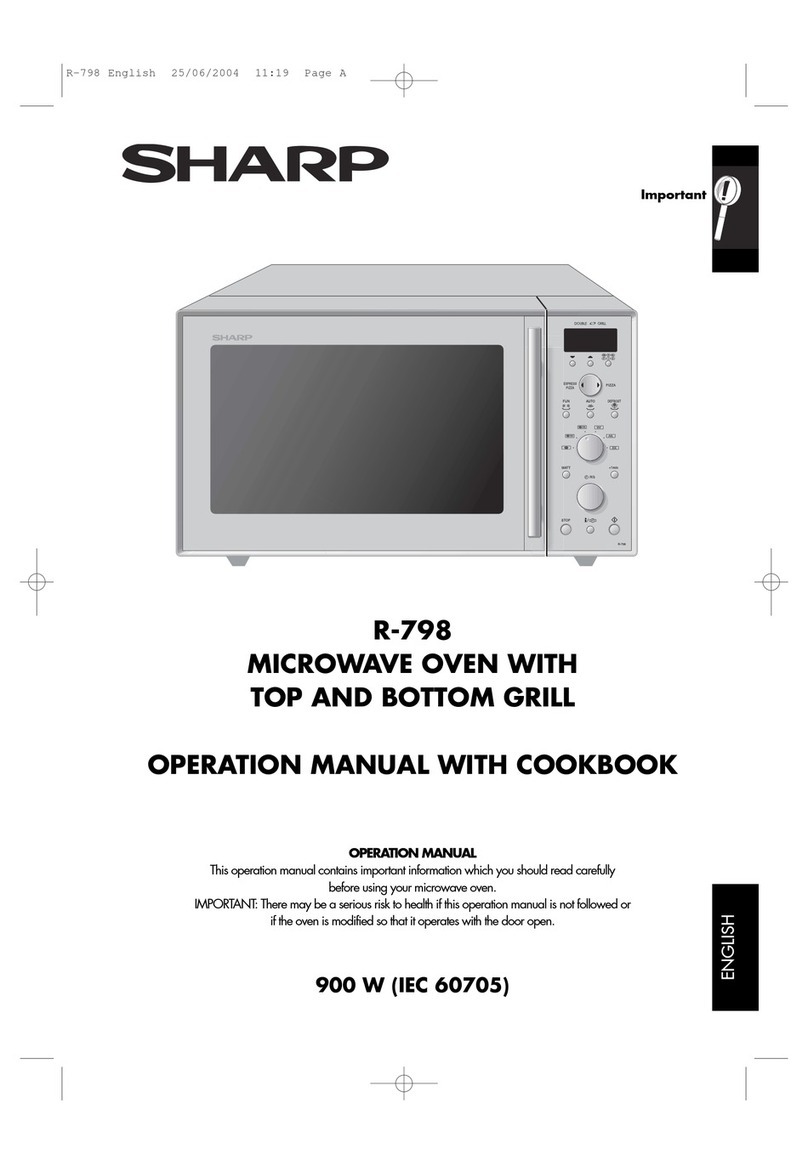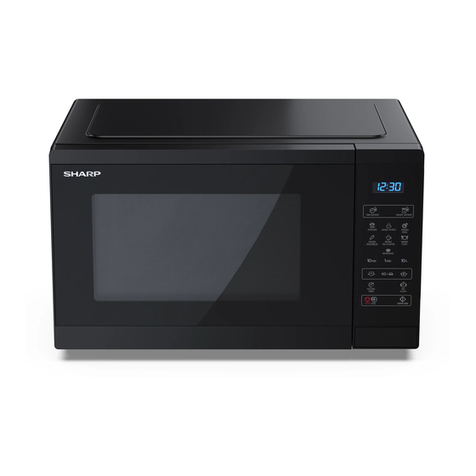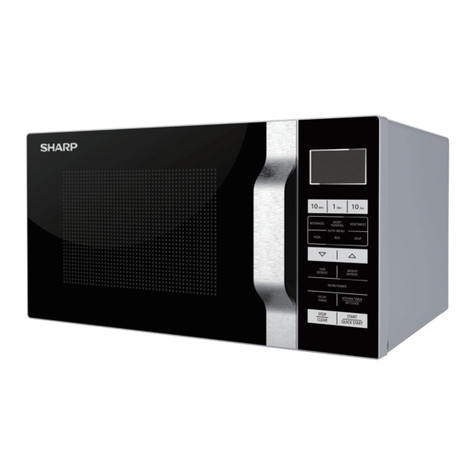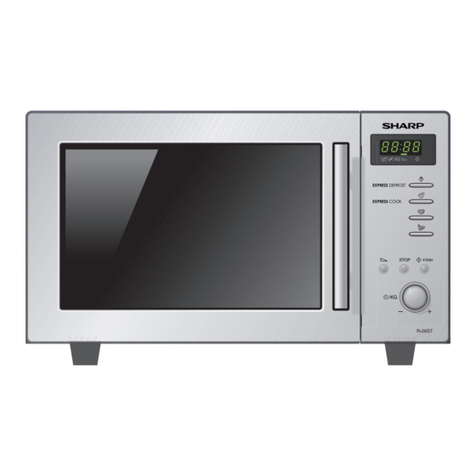
8
R-310BK
R-310BW
DESCRIPTION AND FUNCTION OF COMPONENTS
DOOR OPEN MECHANISM
The door is opened by pushing the open button on the
control panel, refer to the Figure D-1.
Whentheopenbuttonispushed,theopenbuttonpushesup
the switch lever, and then the switch lever pushes up the
latch head. The latch heads are moved upward and re-
leased from latch hook. Now the door will open.
open,themonitorfuseblowssimultaneouslywithclosing
of the monitor switch contacts.
CAUTION: BEFORE REPLACING A BLOWN MONITOR
FUSE TEST THE DOOR SENSING SWITCH,
PRIMARYINTERLOCKRELAY(RY2),RELAY
(RY1), SECONDARY INTERLOCK SWITCH
AND MONITOR SWITCH FOR PROPER OP-
ERATION.(REFERTOCHAPTER"TESTPRO-
CEDURE").
NOTE: MONITOR FUSE AND MONITOR SWITCH ARE
REPLACED AS AN ASSEMBLY.
TURNTABLE MOTOR
The turntable motor rotates the turntable located on the
bottomof theoven cavity,so thatthe foodson theturntable
cookevenlyduringcooking.Theturntablemayturnineither
direction.
COOLING FAN MOTOR
The cooling fan motor drives a blade which draws external
cool air. This cool air is directed through the air vanes
surroundingthemagnetronandcoolsthemagnetron.Thisair
is channelled through the oven cavity to remove steam and
vapors given off from the heating foods. It is then exhausted
through the exhausting air vents at the oven cavity.
MONITOR FUSE
1. Themonitorfuseblowswhenthecontacts(COM-NO)of
theprimaryinterlockrelay(RY2)andsecondaryinterlock
switchremainclosed withthe ovendoor openandwhen
the monitor switch closes.
2. If the wire harness or electrical components are short-
circuited, this monitor fuse blows to prevent an electric
shock or fire hazard.
OVEN THERMAL CUT-OUT
Thethermalcut-out,locatedonthetopoftheovencavity,is
designedtoprevent damagetotheoven byfire.If the foods
load is overcooked, by either error in cook time or defect in
the control unit, the thermal cut-out will open.
Under normal operation, the oven thermal cut-out remains
closed. However, when abnormally high temperatures are
reachedwithintheovencavity,theoventhermalcut-outwill
open at 257˚F(125˚C), causing the oven to shut down.
MAGNETRON THERMAL CUT-OUT
Thethermalcut-outlocatednearthemagnetronisdesigned
to prevent damage to the magnetron if an over heated
condition develops in the tube due to cooling fan failure,
obstructed air guide, dirty or blocked air intake, etc. Under
normaloperation, thethermal cut-outremains closed.How-
ever,whenabnormallyhightemperaturesarereachedwithin
themagnetron,thethermalcut-outwillopenat338˚F(170˚C)
causing the oven to shut down. When the magnetron has
cooled to safe operating temperature, the thermal cut-out
closes at 311˚F(155˚C) and the cook cycle will resume.
Figure D-1. Door Open Mechanism
DOOR SENSING AND SECONDARY INTERLOCK
SWITCHES
The secondary interlock switch is mounted in the lower
positionofthelatch hook andthe doorsensingswitch inthe
primaryinterlocksystemismountedintheupperpositionof
thelatchhook.They are activatedby thelatchheads onthe
door. When the door is opened, the switches interrupt the
power to all high voltage components. A cook cycle cannot
take place until the door is firmly closed thereby activating
both interlock switches. The primary interlock system con-
sists of the door sensing switch and primary interlock relay
located on the control circuit board.
MONITOR SWITCH
Themonitorswitchisactivated(thecontactsopened)bythe
latch head on the door while the door is closed. The switch
is intended to render the oven inoperative, by means of
blowing the monitor fuse, when the contacts of the primary
interlock relay (RY2) and secondary interlock switch fail to
open when the door is opened.
Functions:
1. When the door is opened, the monitor switch contact
close (to the ON condition) due to their being normally
closed.Atthistimetheprimaryinterlockrelay(RY2)and
secondary interlock switch are in the OFF condition
(contactsopen)duetotheirbeingnormallyopencontact
switches.
2. Asthedoorgoestoaclosedposition,themonitorswitch
contacts are first opened and then the door sensing
switchandthesecondaryinterlockswitchcontactsclose.
(On opening the door, each of these switches operate
inversely.)
3. If the door is opened, and the primary interlock relay
(RY2) and secondary interlock switch contacts fail to
Latch Hook
Door
Sensing
Switch
Monitor
Switch
Secondary
Interlock
Switch
Switch
Lever
Latch
Heads
Door
